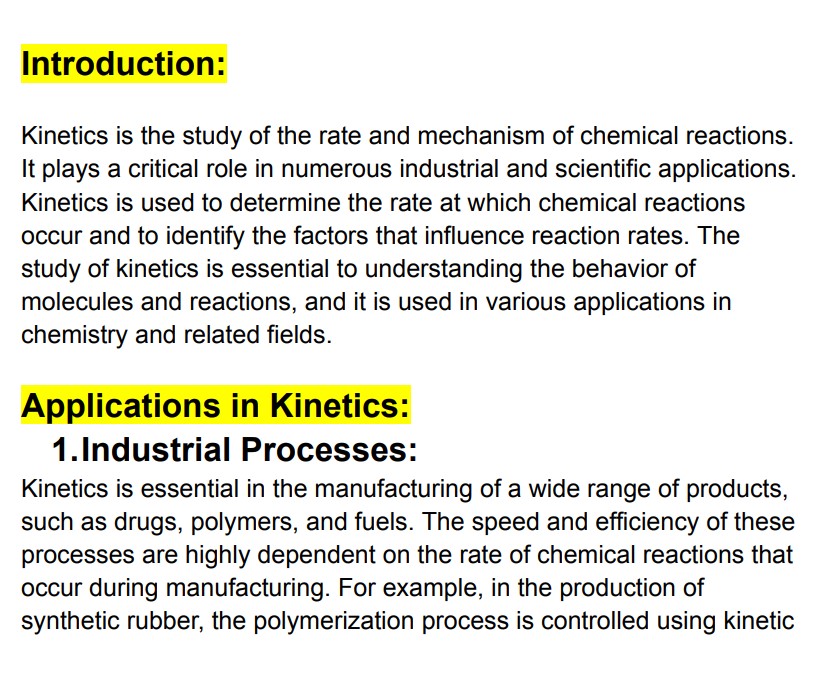The Role of Kinetics in Science and Industry
Summary:
The Role of Kinetics in Science and Industry note provides an overview of the diverse applications of kinetics, the study of the rate and mechanism of chemical reactions. Kinetics is essential in various industrial and scientific applications, including the production of drugs, polymers, and fuels, understanding the behaviour of pollutants in the environment, determining the shelf life of food products, developing new materials, and producing energy from renewable sources. The essay highlights the importance of understanding the rate and mechanism of chemical reactions in optimizing industrial processes and designing new technologies.
Excerpt:
The Role of Kinetics in Science and Industry
Kinetics and Its Diverse Applications: An Insightful Essay
Introduction:
Kinetics is the study of the rate and mechanism of chemical reactions. It plays a critical role in numerous industrial and scientific applications. Kinetics is used to determine the rate at which chemical reactions
occur and identify the factors that influence reaction rates. The study of kinetics is essential to understanding the behaviour of molecules and reactions, and it is used in various applications in chemistry and related fields.
Applications in Kinetics:
1. Industrial Processes:
Kinetics is essential in the manufacturing of a wide range of products, such as drugs, polymers, and fuels. The speed and efficiency of these processes are highly dependent on the rate of chemical reactions that occur during manufacturing. For example, in the production of synthetic rubber, the polymerization process is controlled using kinetic principles to ensure the desired physical and chemical properties of the final product. In the production of pharmaceutical drugs, the kinetics of the reactions are used to determine the rate at which the drug is released into the body, ensuring optimal efficacy and safety.
2. Environmental Science:
Kinetics is used to understand the behaviour of pollutants in the environment. For example, the rate at which pollutants break down or react with other substances in the atmosphere determines their impact on air quality. Kinetic principles are also used to determine the rate of biodegradation of pollutants in soil and water, which is critical in designing effective remediation strategies.


Reviews